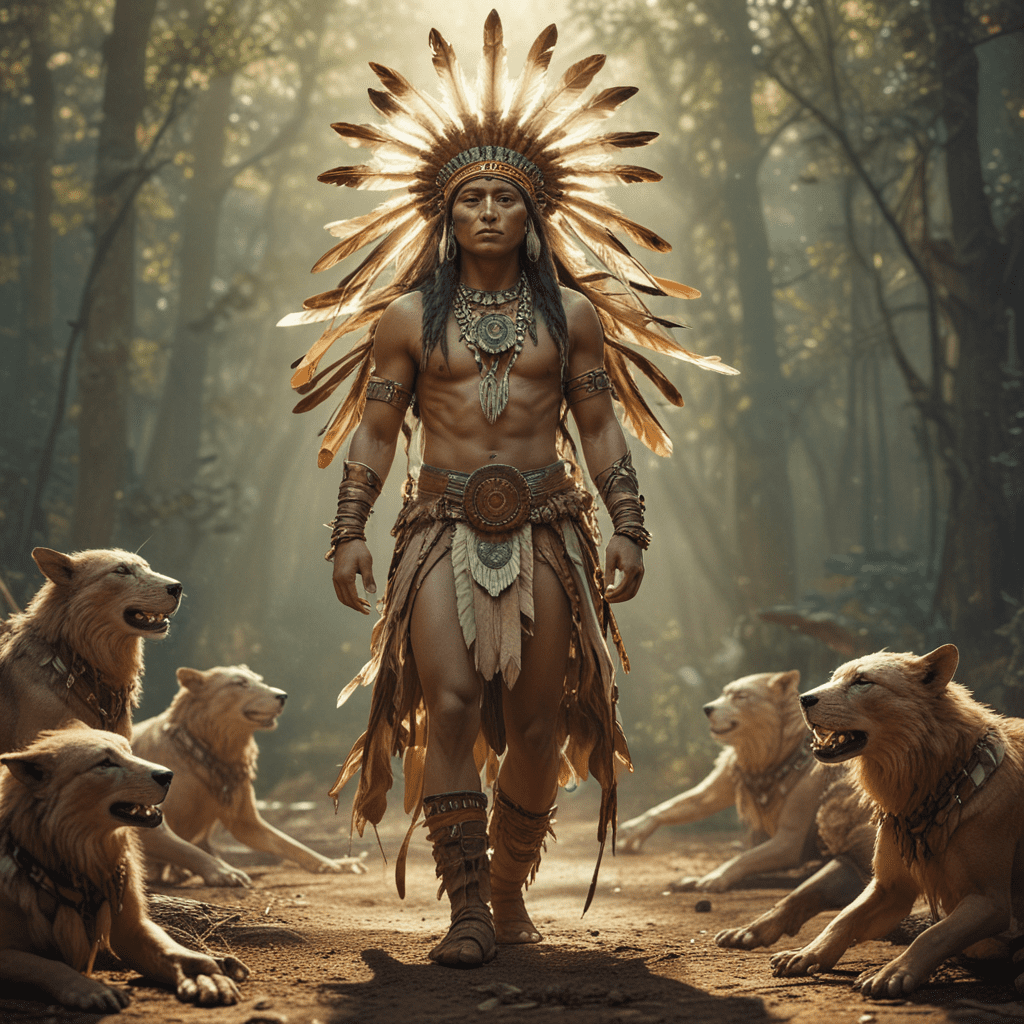1. Introduction
Trickster figures are prevalent in mythologies worldwide, representing archetypal characters who embody qualities of wit, cunning, and deception. In Native American mythology, tricksters play a significant role, embodying both positive and negative aspects of human nature. These characters often serve as cultural heroes, bringing both knowledge and chaos into the world.
2. Coyote: The Archetypal Trickster
Coyote is perhaps the most well-known and widespread trickster figure in Native American mythology. Often depicted as a cunning and mischievous animal, Coyote's actions can be both foolish and profound. As a creator and culture hero, Coyote brought fire and other essentials to humanity. However, his trickster nature leads him into various misadventures, serving as a cautionary tale about the dangers of excessive cunning.
3. Raven: The Creator and Transformer
Raven is another prominent trickster figure, particularly in Northwest Coast and sub-Arctic cultures. Possessing a ravenous appetite and a wandering spirit, Raven is credited with creating the world and its inhabitants through his actions. Despite his trickster nature, Raven's intelligence and resourcefulness often lead him to outwit his adversaries, symbolizing the transformative power of chaos.
4. Spider Woman: The Weaver of Destiny
Spider Woman is a powerful trickster figure, particularly in Navajo and Hopi cultures. As the weaver of the web of life, Spider Woman possesses the ability to manipulate fate and destiny. While she can be benevolent and protect the innocent, she is also capable of deceit and trickery, ensuring the balance of cosmic forces.
5. Old Man Coyote: The Wise Fool
Old Man Coyote is a variation of the trickster figure found among some Plains tribes. In contrast to Coyote's youthful and mischievous nature, Old Man Coyote is wiser and more composed. His trickster nature manifests through his ability to outwit others in a subtle and cunning manner, teaching valuable lessons about the folly of arrogance.
6. Iktomi: The Shape-Shifting Trickster
Iktomi is a revered trickster figure in Lakota mythology. Known for his shape-shifting abilities, Iktomi can transform himself into various animals or objects to play pranks or teach valuable lessons. Despite his trickster nature, Iktomi is often portrayed as a wise and revered elder, embodying the duality of human nature.
7. Sedna: The Trickster Goddess of the Sea
Sedna is a powerful trickster goddess in Inuit mythology, ruling the depths of the ocean. While she can be benevolent and provide sustenance, she is also capable of great wrath. Sedna's trickster nature is evident in her ability to manipulate the weather and cause storms, symbolizing the unpredictable nature of the sea.
8. Gluskabe: The Benevolent Trickster
Gluskabe is a benevolent trickster figure in the mythology of the Wabanaki Confederacy. Credited with creating the world and its inhabitants, Gluskabe uses his trickster abilities to help people and outwit his adversaries. Unlike many other trickster figures, Gluskabe's actions are primarily guided by a desire to do good, earning him the respect and admiration of his people.
9. The Trickster's Role in Native American Cultures
Trickster figures play a crucial role in Native American cultures, serving as archetypal characters that embody the complexities of human nature. Through their actions, tricksters teach valuable lessons about the dangers of arrogance, the importance of adaptability, and the transformative power of chaos. They remind us that life is full of both challenges and opportunities, and that wisdom can often be found in unexpected places.
10. Trickster Archetypes in Contemporary Native American Literature
Trickster archetypes continue to resonate in contemporary Native American literature, providing a framework for exploring identity, history, and the complexities of modern life. Native American authors such as Leslie Marmon Silko, Sherman Alexie, and Louise Erdrich draw upon traditional trickster characters to create multi-dimensional protagonists who embody the spirit of resistance, resilience, and humor.
FAQ
Q: Why are trickster figures so prevalent in Native American mythology?
A: Trickster figures embody the complexities of human nature, teaching lessons about arrogance, adaptability, and the transformative power of chaos. They provide a framework for understanding the world and our place within it.
Q: Which Native American tribe is most associated with Coyote as a trickster figure?
A: Coyote is a widespread trickster figure found in many Native American tribes, but he is particularly associated with the Lakota, Navajo, and Hopi cultures.
Q: What is the significance of the Raven trickster figure in Northwest Coast mythology?
A: Raven is credited with creating the world and its inhabitants through his actions, symbolizing the transformative power of chaos. He is a reminder of the interconnectedness of all things and the importance of balance.
Q: How does Spider Woman represent the duality of human nature?
A: Spider Woman, particularly in Navajo and Hopi cultures, possesses the ability to manipulate fate and destiny. She can be benevolent and protect the innocent, but also capable of deceit and trickery, ensuring the balance of cosmic forces.


